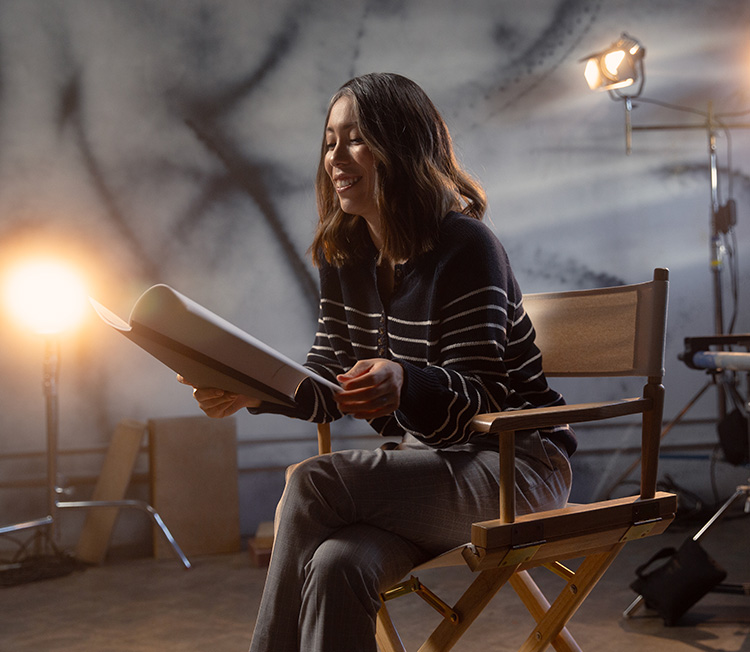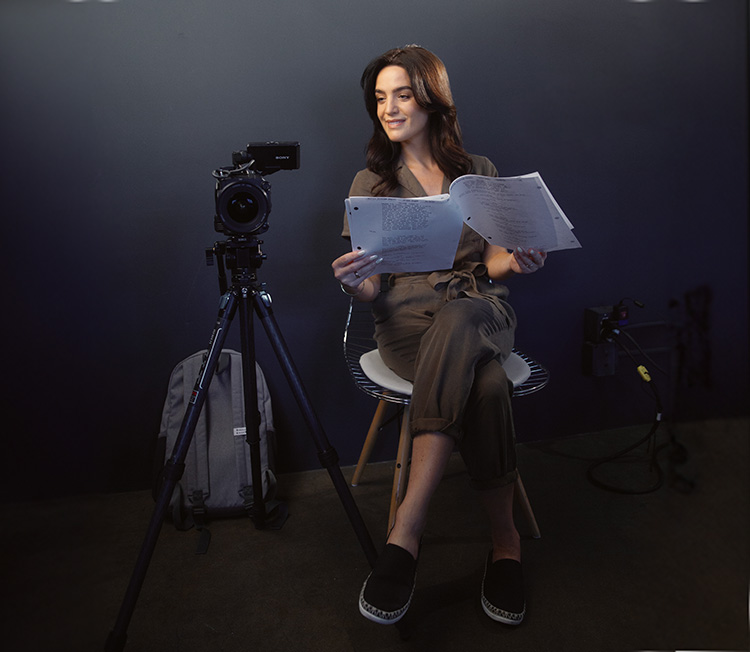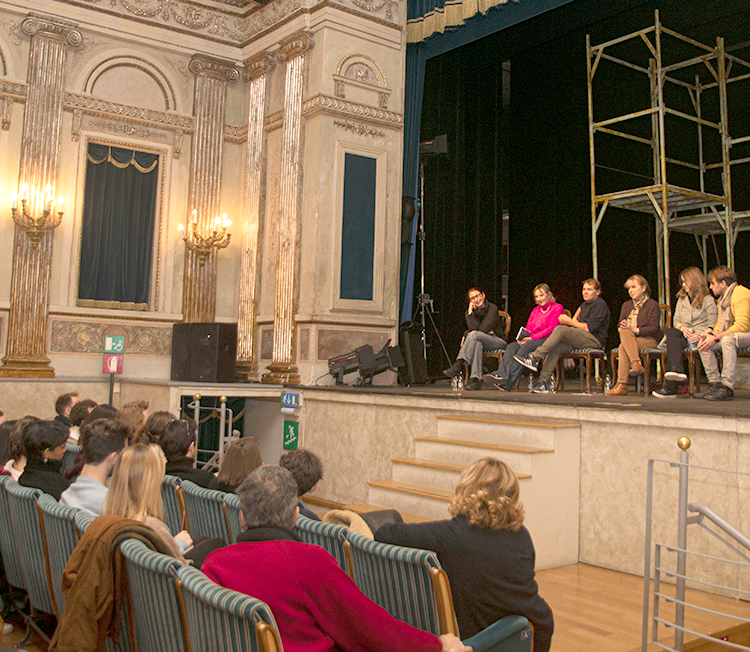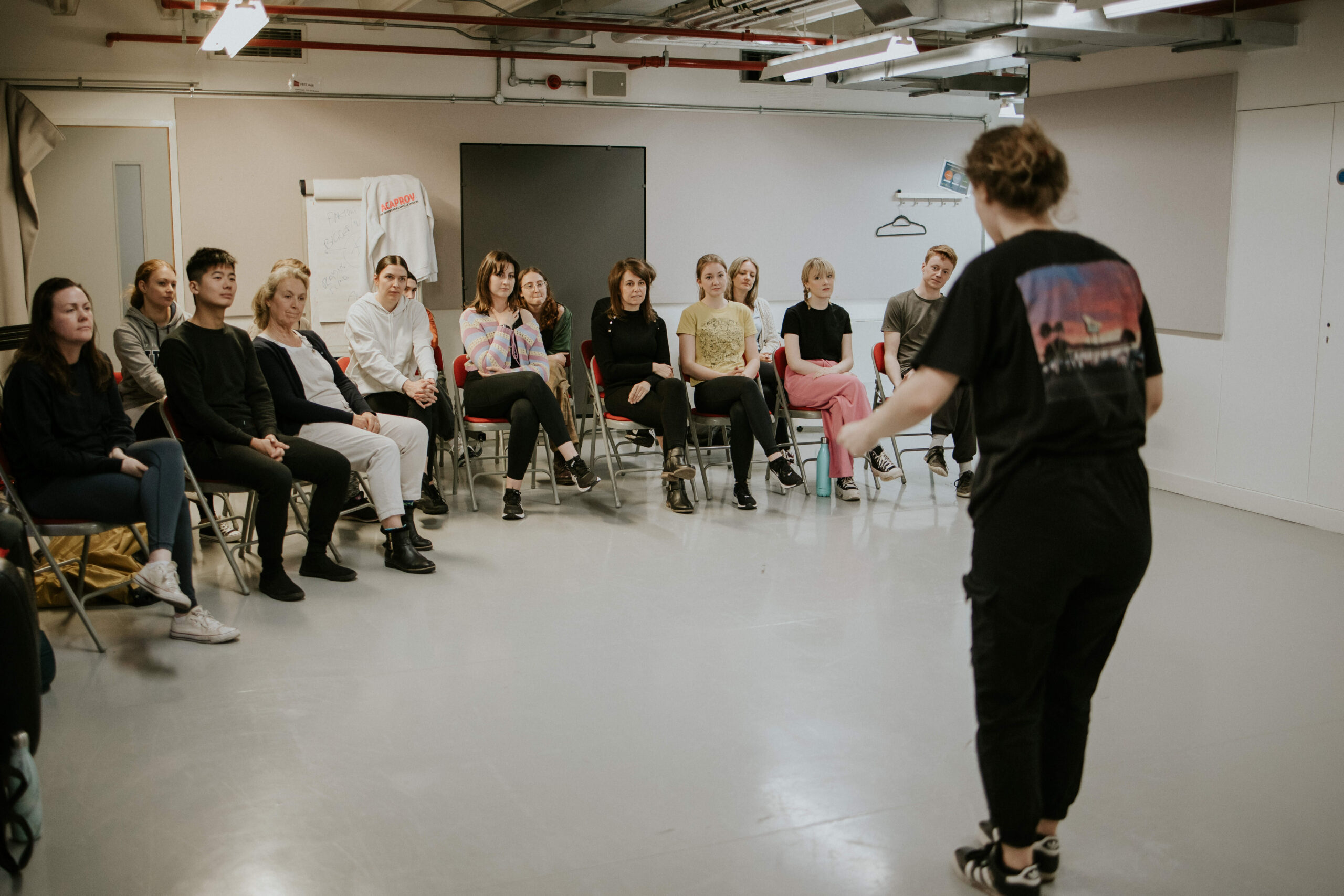Performance and technical tips for acting in rehearsed readings online.
Performing in a rehearsed reading can be challenging at the best of times. Rehearsal periods are incredibly short and acting with a physical script in hand can take some navigating. But performing in a rehearsed reading on a virtual platform presents actors with different responsibilities.
Discover how to make your experience performing in rehearsed readings online as smooth as possible with these performance and technical techniques.
Familiarise yourself with the script
A rehearsed reading isn’t a glorified sight-read. Whilst you aren’t expected to be off-book, having a strong grasp of the lines, the beats and the blocking will help you deliver a strong performance. Plus you’ll be able to confidently gauge when you can scroll down to your lines or turn a page without breaking a dramatic moment in a scene.
Decide on devices
Rehearsed readings vary in style from project to project. Some directors require actors to literally read the script whereas others involve movement, blocking and props. It’s important that you are prepared for different script setups, even on virtual platforms.
- Decide if you are reading off of a screen, a printout or a separate device from the one you are performing in front of.
- Experiment with what works best for you and for the piece. If the performance involves a lot of blocking, but the script is eighty pages long, it might be more convenient to read off of a screen than it is to navigate turning the hefty pages of a printout.
- Consider technical challenges. For example, if you have a long wait between scenes and you are visible for that time, you might need to change device settings to ensure your device doesn’t lock after a certain amount of inactivity.
Audiences are generous and understand the technical challenges we’re facing, but their engagement will drop if they have to watch actors tap-tapping on a screen trying to find their lines.
The placement of your script and of your device will impact your performance so make sure that you’ve practised how you’re going to read.
Negotiate theatre performance skills with screen acting skills
When a stage play is being read for an online performance, it can be tempting to just go full on-screen acting. But remember these scripts were created with live theatre in mind.
Focus on understanding the platform that you’re working on rather than changing the medium of the piece. For example, whereas in a theatre you would project your voice now you can take advantage of using a microphone.
Similarly, where you would normally be aware of proxemics between your fellow performers, now you need to be aware of your camera and your audience.
- Do you need to prop your device up so that the audience can see you clearly?
- Is your device portable, can you carry it around and perform into it at the same time?
Experiment with what is possible in the space that you have.
Be your own crew
Performing live from home means that you are your own technician and stage manager.
- Scout suitable locations to film in your home. This is where your knowledge of self-tape set-ups come in handy. You wouldn’t film against a backdrop that was distracting or inappropriate for a self-tape, so apply this common sense to a live reading and pick an appropriate space to perform in.
- Find a space where you are well lit. Most of us don’t have fancy theatre or studio lights at home, so work with what you’ve got.
- Take stock of your devices. Some directors want to include movement and blocking in an online rehearsed reading, so make sure you know if that’s possible with the tech you have. Whether you have a fixed PC or a tablet that you can stand up, being equipped with this knowledge will make the rehearsal process much more efficient.
- Place your props. How will you keep props to hand: on a chair, a shelf, on a table? What’s the easiest and least distracting way to access them during a scene?
At first it might feel overwhelming and alien to perform from home, but you can relieve the pressure by creating a set-up that is convenient for you working with the space that you have.
Being familiar with your tech set-up and experimenting with how to read the script will make it a more enjoyable experience and enable you to concentrate fully on your job: acting.

Naomi Joseph is an actor, theatre-maker and writer. Naomi’s work includes ‘Criteria’, an award-winning spoken word short about cultural identity and bereavement. ‘Criteria’ is available to watch now on Vimeo. Its companion piece ‘Motherland’ is a dark comedy theatre show which played at various festivals across the UK.
Headshot photographer: Robert Boulton
Main image by zeljkosantrac












